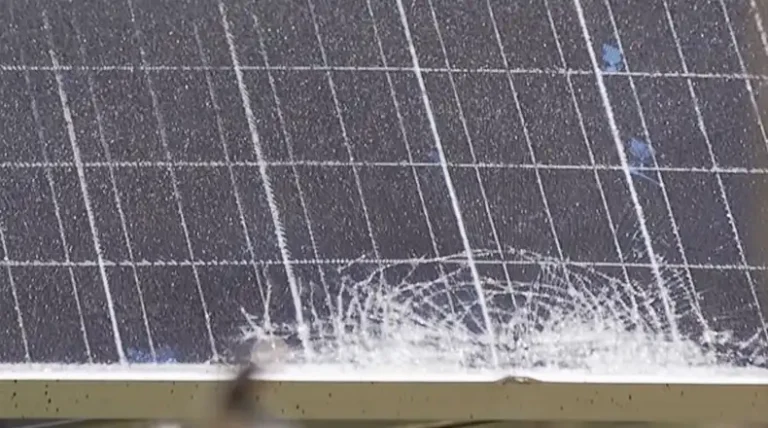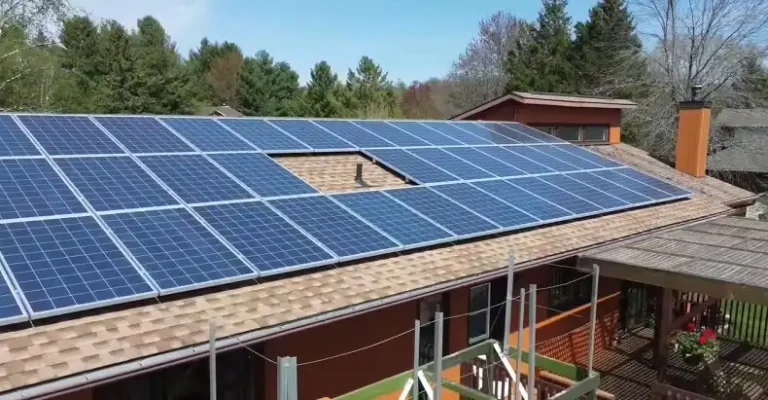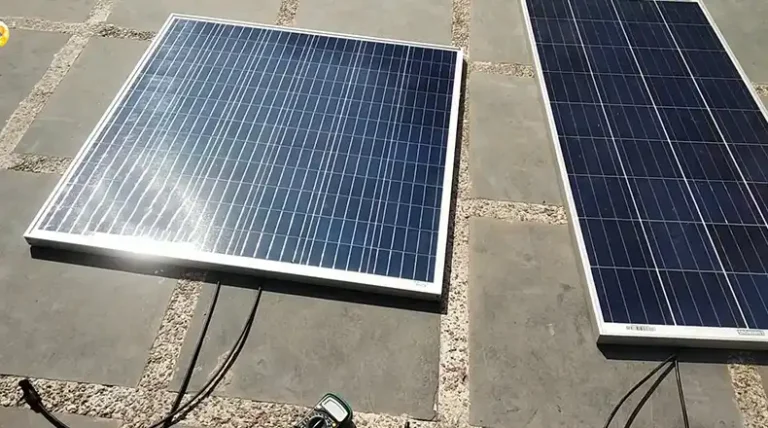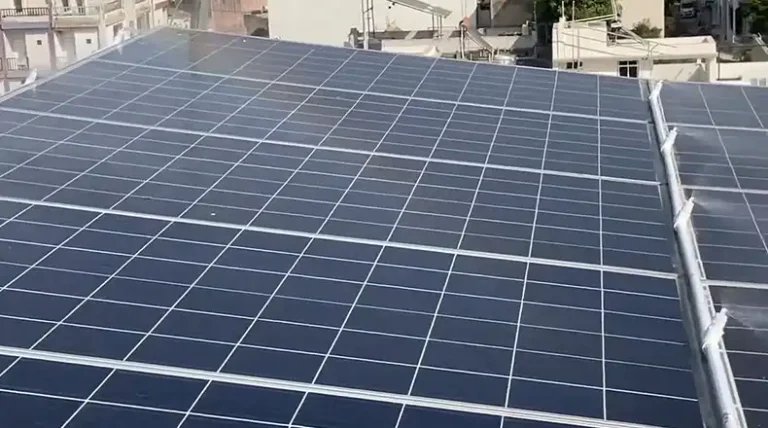How To Choose The Right Solar Panel Tilt And Orientation For Your Location?
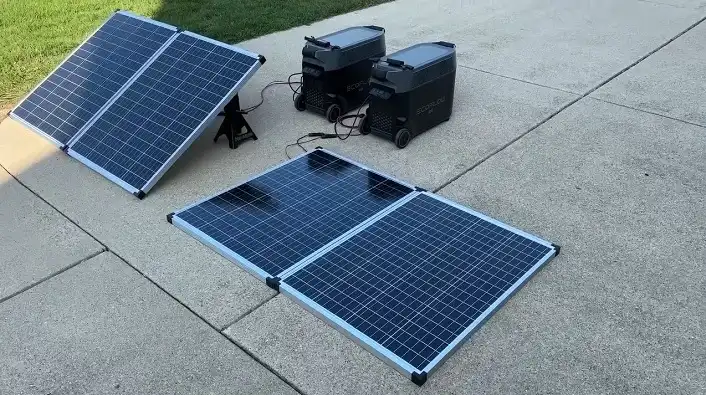
If you’re considering installing solar panels on your property, one of the most crucial factors to consider is how to position them for maximum energy production.
The tilt and orientation of your solar panels can significantly impact their efficiency, potentially making the difference between a good investment and a great one.
In this guide, we’ll explore how to choose the right solar panel tilt and orientation for your specific location, helping you maximize your system’s performance and your energy savings.
The key to optimizing your solar panel setup lies in understanding how the sun’s position changes throughout the day and year in your area.
By aligning your panels to capture the most sunlight possible, you can boost your system’s output and increase your return on investment.
Whether you’re in sunny California or cloudy Michigan, the principles we’ll discuss apply across the board, though the specifics may vary.
Let’s dive into the world of solar panel positioning and learn how to harness the sun’s power most effectively for your home or business.
Understanding Solar Panel Orientation
Solar panel orientation is crucial for maximizing energy production. It involves determining the best direction and angle for your panels to capture the most sunlight throughout the year.
What Is Solar Panel Orientation?
Solar panel orientation refers to the direction your panels face in relation to the cardinal points of the compass. This is a critical factor in determining how much sunlight your panels can capture throughout the day.
The Importance Of Direction For Solar Panels
The direction your solar panels face plays a crucial role in their overall efficiency. Panels that face the optimal direction will receive more direct sunlight over the course of a day, resulting in higher energy production.
Optimal Orientation For Different Hemispheres
In the Northern Hemisphere, including most of the United States, solar panels generally perform best when facing south. This is because the sun’s path across the sky is predominantly in the southern portion of the sky throughout the year.
For those in the Southern Hemisphere, the opposite is true – north-facing panels tend to be most effective. However, it’s important to note that local factors can sometimes make other orientations more beneficial.
Key Factors Affecting Solar Panel Orientation
Direction:
- Northern Hemisphere: Generally, south-facing panels receive the most sunlight.
- Southern Hemisphere: North-facing panels are optimal.
- East and West: While not ideal, east or west-facing panels can still generate electricity, especially if you have high energy consumption during those times.
Tilt Angle:
- This is the angle at which the panels are tilted towards the ground.
- The optimal tilt angle varies based on your location’s latitude.
- Generally, the tilt angle should be close to your latitude for maximum annual energy production.
- However, adjusting the tilt angle seasonally can further optimize energy output.
Solar Panel Tilt: Getting the Angle Right
The tilt angle of your solar panels is just as important as their orientation. It determines how effectively your panels can capture sunlight throughout the year.
What Is Solar Panel Tilt?
Solar panel tilt refers to the vertical angle at which your panels are installed. This angle affects how directly sunlight hits the panels, which in turn impacts their efficiency.
Factors Affecting The Ideal Tilt Angle
Several factors influence the optimal tilt angle for your solar panels:
Latitude: Generally, the further you are from the equator, the steeper the tilt angle should be.
Seasonal changes: The sun’s path varies throughout the year, which can affect the ideal tilt.
Local weather patterns: Areas with heavy snowfall might benefit from steeper angles to help snow slide off.
General Guidelines For Tilt Angles
While specific calculations are best, a common rule of thumb is to set your panel tilt angle equal to your latitude. For example, if you’re in New York City (around 40° N latitude), a tilt of about 40° could be a good starting point.
Optimizing Solar Panel Performance by Location
By understanding how your location affects solar panel performance, you can optimize your system for maximum electricity production. Here are key factors to consider:
Considerations For Different Latitudes
Your latitude plays a significant role in determining the best setup for your solar panels.
Locations closer to the equator generally benefit from flatter panel angles, while those in higher latitudes often require steeper angles to capture more of the lower-angled sunlight.
Here’s a table summarizing the base tilt angle calculations for some example locations:
| Location | Hemisphere | Latitude | Base Tilt Angle |
| Los Angeles, CA | Northern | 34.05 | 34.05 degrees |
| Miami, FL | Northern | 25.76 | 25.76 degrees |
| Seattle, WA | Northern | 47.61 | 47.61 degrees |
| São Paulo, Brazil | Southern | -23.55 | 23.55 degrees |
| Sydney, Australia | Southern | -33.87 | 33.87 degrees |
Regional Variations And Local Factors
Beyond latitude, local climate conditions can impact your ideal panel setup. For instance:
- Areas with frequent cloudy weather might benefit from slightly steeper angles to maximize production during clearer periods.
- Regions with heavy snowfall could use steeper angles to help panels self-clear snow more easily.
- Coastal areas might consider the impact of salt spray when determining panel orientation and tilt.
3. Using Online Tools To Determine Optimal Settings
Several online tools can help you find the best orientation and tilt for your location. The National Renewable Energy Laboratory’s PVWatts Calculator is a popular option that allows you to input your address and system details to estimate energy production under different scenarios.
Seasonal Adjustments for Solar Panels
While the base tilt angle is a good starting point, you can optimize further by adjusting the tilt slightly for summer and winter. A slight tilt increase in winter allows your panels to capture more of the lower winter sun.
Conversely, a slight decrease in summer tilt allows your panels to avoid the intense midday sun, reducing heat buildup and potential efficiency losses.
How Seasons Affect Solar Panel Efficiency
The sun’s path across the sky changes throughout the year. In summer, the sun is higher in the sky and days are longer, while in winter, the sun is lower and days are shorter. This seasonal variation affects how much energy your panels can produce.
Adjusting Tilt For Summer And Winter
To maximize year-round production, you might consider adjusting your panel tilt seasonally:
Summer: Tilt angle = latitude minus 15°
Winter: Tilt angle = latitude plus 15°
For example, if you’re in Chicago (latitude ~42°), you might use a 27° tilt in summer and a 57° tilt in winter.
Fixed Vs. Adjustable Mounting Systems
While adjustable systems can optimize production year-round, they’re more complex and expensive. Most residential systems use fixed mounts, which are simpler and more cost-effective.
Your installer can help determine if the potential gains from an adjustable system justify the added cost in your situation.
Shading
Even minor shading from trees, buildings, or other structures can significantly reduce your panels’ efficiency. When designing your solar panel system, consider shading throughout the day to ensure your panels receive maximum sunlight exposure.
Local Climate
Factors like cloud cover and snowfall can influence the optimal tilt angle. Consulting with a local solar installer familiar with your region’s climate can help you determine the best tilt angle for your specific location
Special Considerations
When designing your solar system, there are additional factors to consider beyond just orientation and tilt angle:
Flat Roofs And Ground-Mounted Systems
For flat roofs or ground-mounted systems, you have more flexibility in choosing orientation and tilt. These setups often use tilt racks to achieve the optimal angle, which can be especially beneficial in areas far from the equator.
Dealing With Shading And Obstructions
Shading from trees, buildings, or other obstructions can significantly impact solar panel performance. In some cases, it might be better to choose a less-than-ideal orientation or tilt to avoid shading during peak production hours.
Balancing Energy Production And Aesthetics
While optimal tilt and orientation maximize energy production, they might not always align with aesthetic preferences or local regulations. Sometimes, a compromise between performance and appearance is necessary.
Working with Solar Installers
Partnering with a qualified solar installer is crucial for maximizing your solar system’s potential. Their expertise can make a significant difference in your system’s performance and long-term efficiency.
The Importance Of Professional Assessments
Professional solar installers have the tools and expertise to accurately assess your property and recommend the best setup. They can perform shade analyses and use sophisticated modeling software to predict energy production under different scenarios.
Questions To Ask Your Installer About Orientation And Tilt
When working with an installer, consider asking:
- What orientation and tilt do you recommend for my location, and why?
- How much difference in production would there be between the optimal setup and alternatives?
- Can you provide production estimates for different orientation and tilt options?
Customizing Your System For Maximum Efficiency
Your installer can help customize your system to your specific needs and local conditions. This might include using microinverters or power optimizers to mitigate the effects of partial shading, or designing a system that maximizes production during peak electricity pricing periods.
Conclusion
Choosing the right solar panel tilt and orientation is crucial for maximizing your system’s energy production and your return on investment.
While south-facing panels at a tilt equal to your latitude is a good general rule in the Northern Hemisphere, many factors can influence the ideal setup for your specific location.
By understanding the principles behind solar panel positioning and working with a knowledgeable installer, you can ensure your solar energy system is optimized for your unique situation.
Remember, even if your roof isn’t perfectly oriented or angled, solar can still be a great investment.
With careful planning and expert guidance, you can harness the power of the sun effectively, reduce your energy bills, and contribute to a more sustainable future.

![[4 Fixes] Solar Panel Has Voltage but No Amps](https://www.itekenergy.com/wp-content/uploads/2023/07/Solar-Panel-Has-Voltage-but-No-Amps-768x428.webp)
![Can You Put Solar Panels on a Townhouse? [Answerd]](https://www.itekenergy.com/wp-content/uploads/2024/04/Can-You-Put-Solar-Panels-on-a-Townhouse-768x428.jpg)
